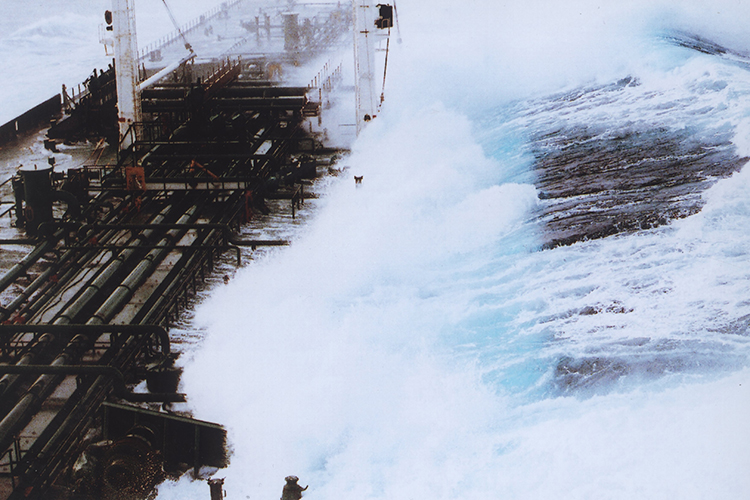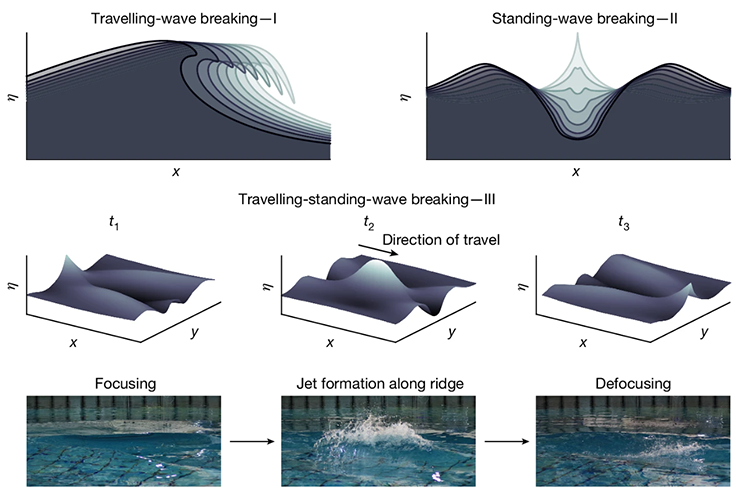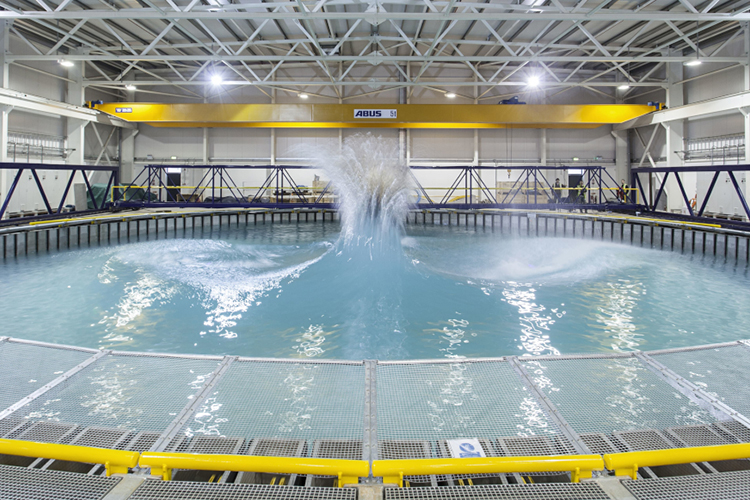Study shows that ocean waves can grow beyond known limits
Posted 23 September, 2024

An 18.5 metre high rogue wave hitting the broadside of a tanker heading south from Alaska Credit: (opens in a new window)NOAA / Captain Roger Wilson, Greenland, New Hampshire
A new study has found ocean waves may become far more extreme than previously imagined.
The insights, (opens in a new window)published in Nature, reveal that when waves meet each other from different directions they can reach heights four times steeper than what was once thought possible.
According to one of the paper’s authors, (opens in a new window)Professor Frederic Dias, University College Dublin and ENS Paris-Saclay, modelling of wave breaking is often based on two-dimensions but in the ocean, waves can travel in many directions.
“Whether we like it or not, water waves are more often three-dimensional than two-dimensional in the real world. In 3D, there are more ways in which waves can break,” he said.
The findings could have implications for how offshore structures are designed, weather forecasting and climate modelling, while also affecting the fundamental understanding of several ocean processes.
The international team of researchers behind this project were based at the University of Oxford, University of Edinburgh, University of Manchester, University College Dublin, Université Paris-Saclay and TU Delft.
Led by Dr Mark McAllister (University of Oxford, Wood Thilsted) and Professor Ton van den Bremer (University of Oxford, TU Delft), the study shows that three-dimensionally spread waves can easily become twice as steep as two-dimensional waves before they break.

Illustrations of three different wave-breaking phenomena: type I overturning ‘travelling-wave breaking’, type II vertical-jet forming ‘standing-wave breaking’ and type III ‘travelling-standing-wave breaking’. In type III, a near-vertical-jet emanates from a fast-moving ridge that forms as the crossing wave crests constructively interfere. Corresponding images were captured during experiments as part of the study.
“We show that in these directional conditions, waves can far exceed the commonly assumed upper limit before they break,” said Sam Draycott, who is a Senior Lecturer in Ocean Engineering, University of Manchester.
Additionally, the researchers found that once a conventional wave breaks, it forms a white cap, and there is no way back. But when a wave with a high directional spreading breaks, it can keep growing.
The study shows that these enormous waves can grow to four times the conventional limiting steepness while breaking.
“The three-dimensionality of waves is often overlooked in the design of offshore wind turbines and other structures in general. Our findings suggest that this could lead to designs that are less reliable," said Mark McAllister, University of Oxford and Wood Thilsted.
The experiments behind the study were made possible by the unique shape of the basin at the (opens in a new window)FloWave Ocean Energy Research Facility, the first circular combined wave and current facility in the world.

The FloWave Ocean Energy Research Facility, located at The University of Edinburgh.
The FloWave wave basin is a circular multidirectional wave and current simulation tank, which is uniquely suited to the generation of waves from multiple directions.
“Creating the complexities of real-world sea states at laboratory scale is central to the mission of FloWave,” said Dr Thomas Davey, Principal Experimental Officer, FloWave, University of Edinburgh.
“This work takes this to a new level by using the multi-directional capabilities of the wave basin to isolate these important wave breaking behaviours.”
Ross Calvert, University of Edinburgh added: “This is the first time we've been able to measure wave heights at such high spatial resolution over such a big area, giving us a much more detailed understanding of complex wave breaking behaviour."
The project follows on previous efforts, (opens in a new window)including research by Professor Dias, to fully recreate and study the famous Draupner freak wave measured in the North Sea in 1995.
This ‘rogue’ wave was more than twice as tall and steep as those around it, with characteristics that, at the time, fell outside any known wave model.
By: David Kearns, Digital Journalist / Media Officer, UCD University Relations
To contact the UCD News & Content Team, email: newsdesk@ucd.ie






